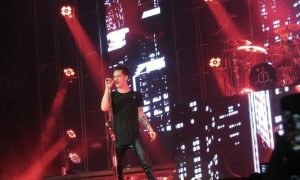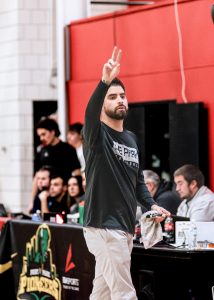Mascot Mania: A spectrum of persona
December 13, 2020
Buckle your seatbelts, folks, it’s another introspective Mascot-analysis week. This week, I’m addressing something that I’m sure I’ve summarized or brushed-over before, but I wanted to make a spotlight piece for this aspect of mascots. I’ve mentioned it before, but there’s more than one way to be a good mascot. Sure, if you look at, say the National Collegiate Mascot Championship’s rules, there’s a definitive way to grade the performance of a mascot, but two good mascots can be completely different in presentation and utility. In this piece, I’ll talk about those different forms of mascot expression,
Before we get into the nitty gritty, I just want to put the main idea out there: mascots can be whatever they want to be, and they can be a good mascot as long as they do their thing really, really well. I feel this way about most things, but I’m sure you wouldn’t be surprised to hear that from me. My whole schtick here is trying to do a niche thing well. I think part of the reason I wanted to address this is because I’ve heard a lot of people making fun of mascots that I actually think are really good, but because they aren’t similar to mascots who routinely make headlines, people think that these mascots are inherently bad or boring, but I want to make my point that these mascots can have value, and do have value.
One mascot that people like to make fun of is the Pirate Parrot. On one hand, I get it. The Pirate Parrot was made in direct response to the birth of the Phillie Phanatic, one of the best mascots ever. The Pirate Parrot isn’t as well known for any aspect of his character as a mascot, and his most famous mascot story is about how the Parrot used to sell cocaine to Pirates players. (I know it was the guy who plays the parrot selling the cocaine, but I like to think that he just never took the costume off while doing it.) The Phillies are also a better baseball team than the Pirates, who have a bit of a legacy of failure, and thus, it’s pretty fun to make fun of them. However, I think that the Pirate Parrot is pretty neat. He’s most popular with kids, and the Pirates organization uses the Parrot and his imagery often to garner enthusiasm from younger audiences. He isn’t as tough or mean as the Phanatic, but he has a job, and he does it well. In National Collegiate terms, the Parrot would rank very strong in audience engagement and community activities.
I think the reason people often dismiss kinder mascots, or ones that are generally geared towards children is because they have a mindset that mascots should represent something that the other team should fear. Gremlins, Devils, Bulls, Coyotes, Wolves. And it’s not that that approach isn’t a valid way of making a mascot, but it just offers the presentation of a different persona.
A mascot that I actually think misses the mark on a friendlier presentation is Iceburgh, of the Pittsburgh Penguins. I love his name, his model. Heck, I have an Iceburgh plushie that I bring to games with me. But personally, I feel like the Pens don’t use Iceburgh to his maximum mascot potential. He feels more like a motif than a real character, and in the end, that’s what we’re going for.
I think at some point, I probably thought something similar, and that’s why I started out making fun of silly mascots like the US Santa Cruz banana slug and the University of Arkansas at Monticello boll weevils on UView. I still think those are silly and absurd mascots and I absolutely do not regret spotlighting them, but I think through this more introspective look at mascots that I’m able to take in the long form, I can really analyze the good that mascots can do off the field and away from the cameras. I also think writing my mascot column during a time without mascot news has offered me a unique opportunity of being able to think about this on a more cerebral level every week.
But there are lots of great ways to make a mascot. Not every mascot has to be intimidating. There’s the Pirate Parrot. There’s Dinger, the mascot of the Colorado Rockies who dances behind home plate to distract the other teams and likes to advocate for physical fitness and reading in his spare time. Many adult fans aren’t super into Dinger because he doesn’t have as much to offer for them, but I adore Dinger.
But in the same vein, there’s a lot of ways to make a bad mascot, too. Poor design, poorly developed personality, lack of engagement, lack of use, lack of dedication, the list goes on. Broadening our views of what makes a good mascot doesn’t make a bad mascot any less hard to make.
I’m not going to say all mascots are good, because that is objectively not true. Not all mascots are designed well or have good origin stories. I stand by most of the things I said during UView, but mascots are multifaceted, and not all mascots need to invoke fear. Sometimes it isn’t about the fear, it’s about the camaraderie that those mascots inspire within their own teams. Mascots can express themselves in a spectrum of ways, and that doesn’t necessarily make them bad.


















